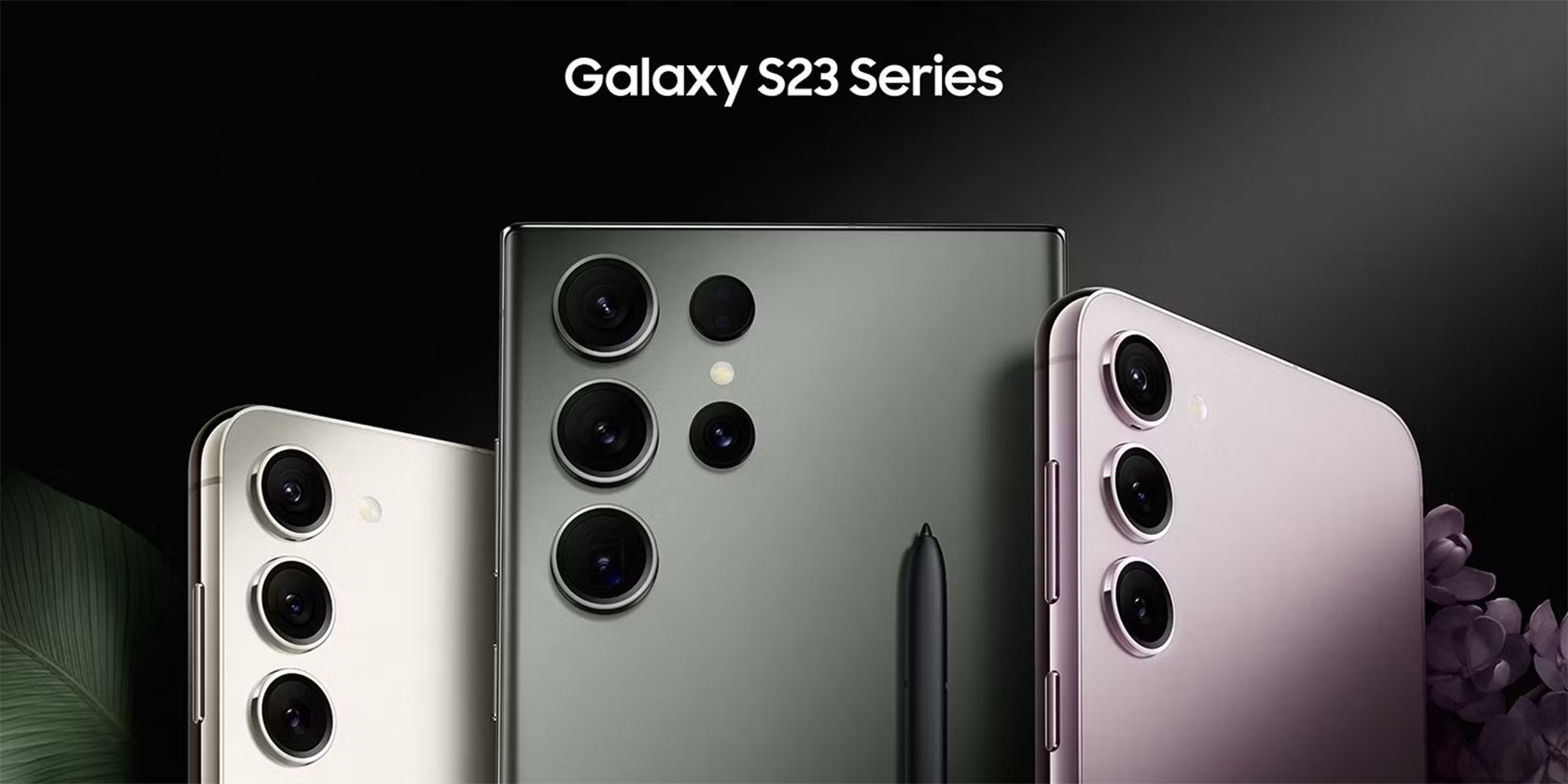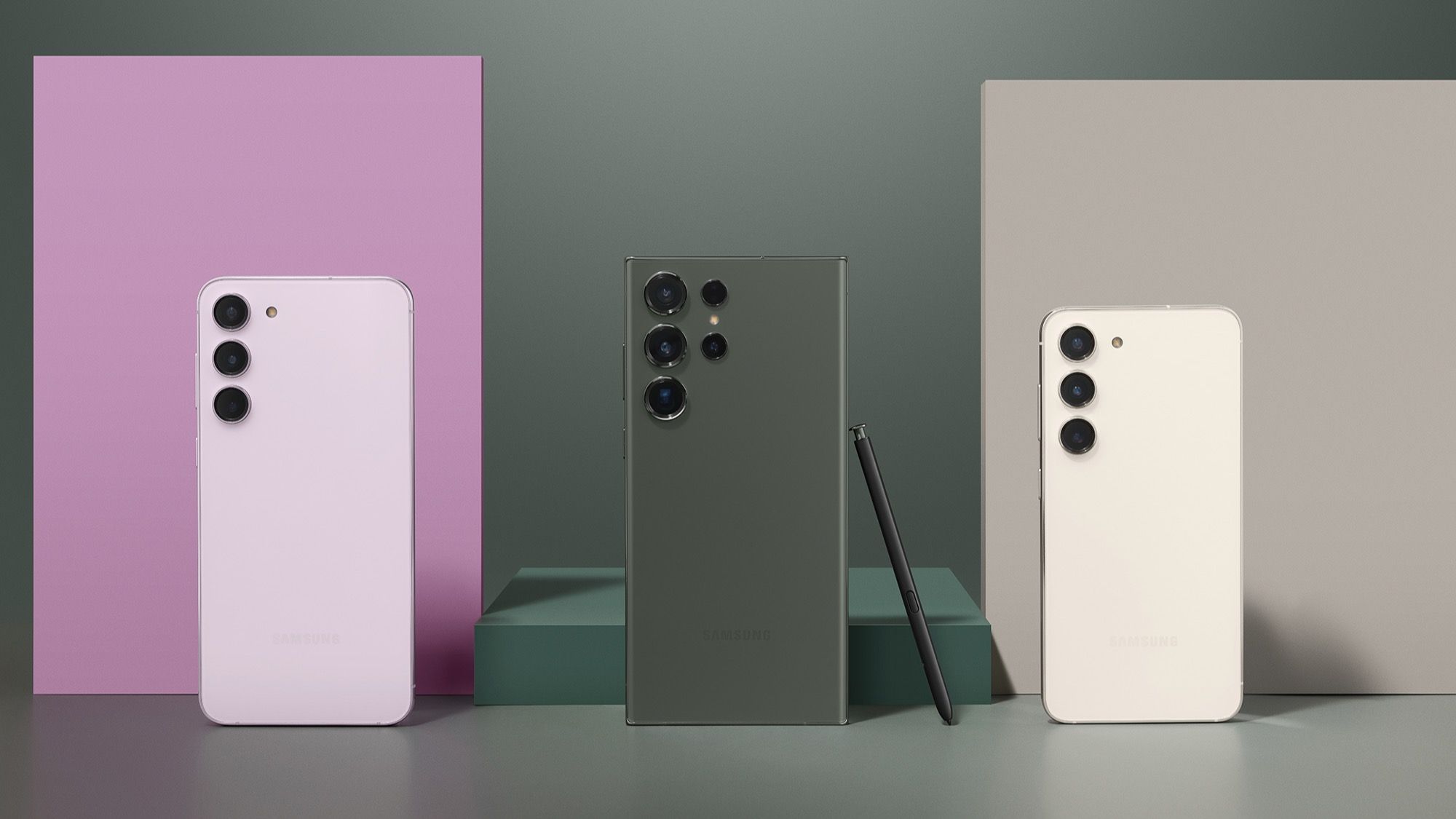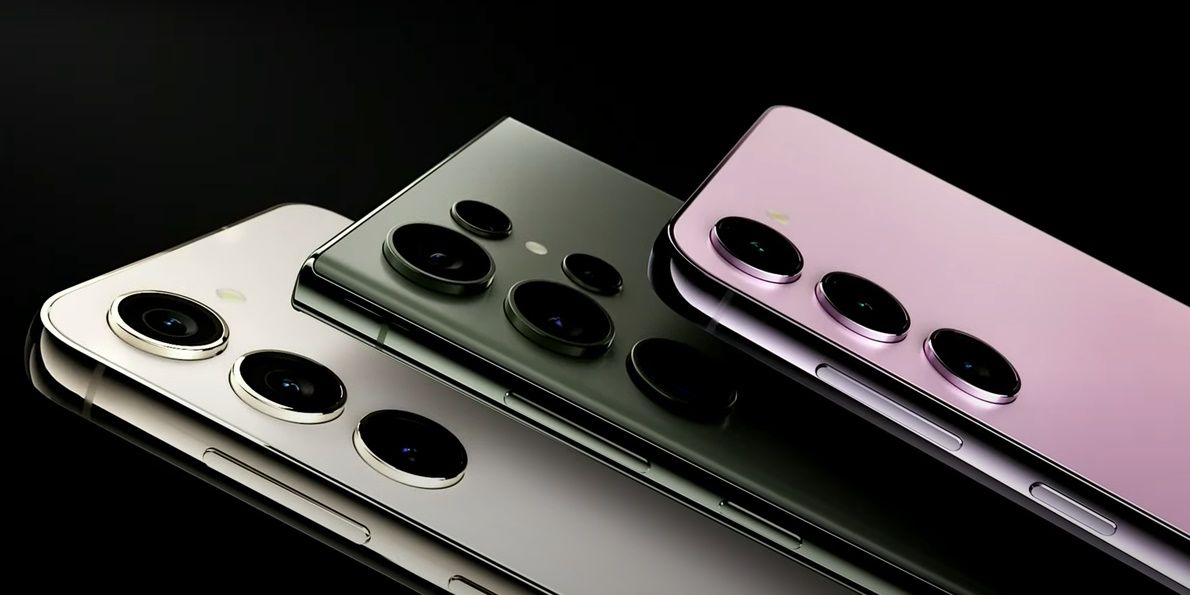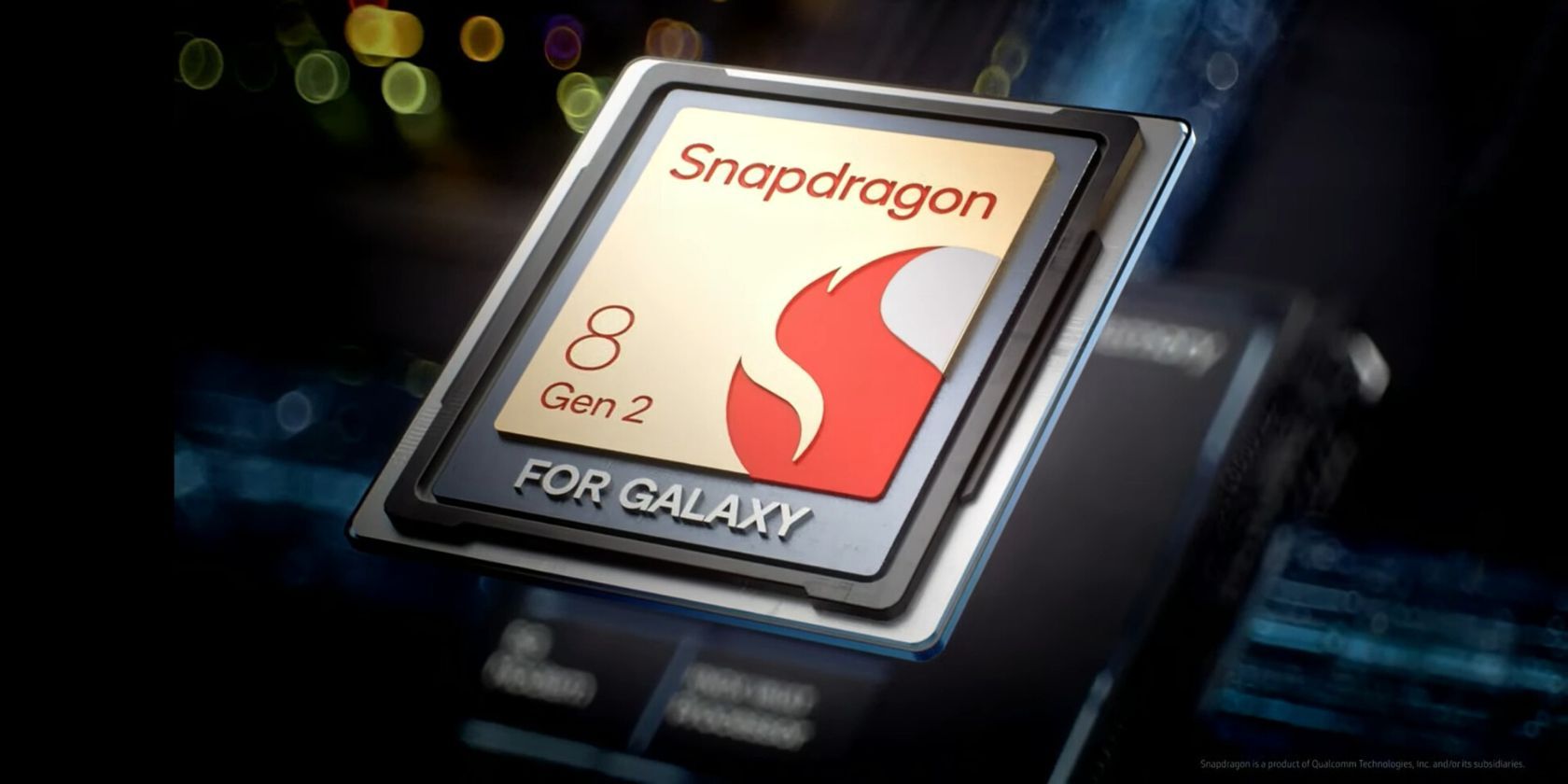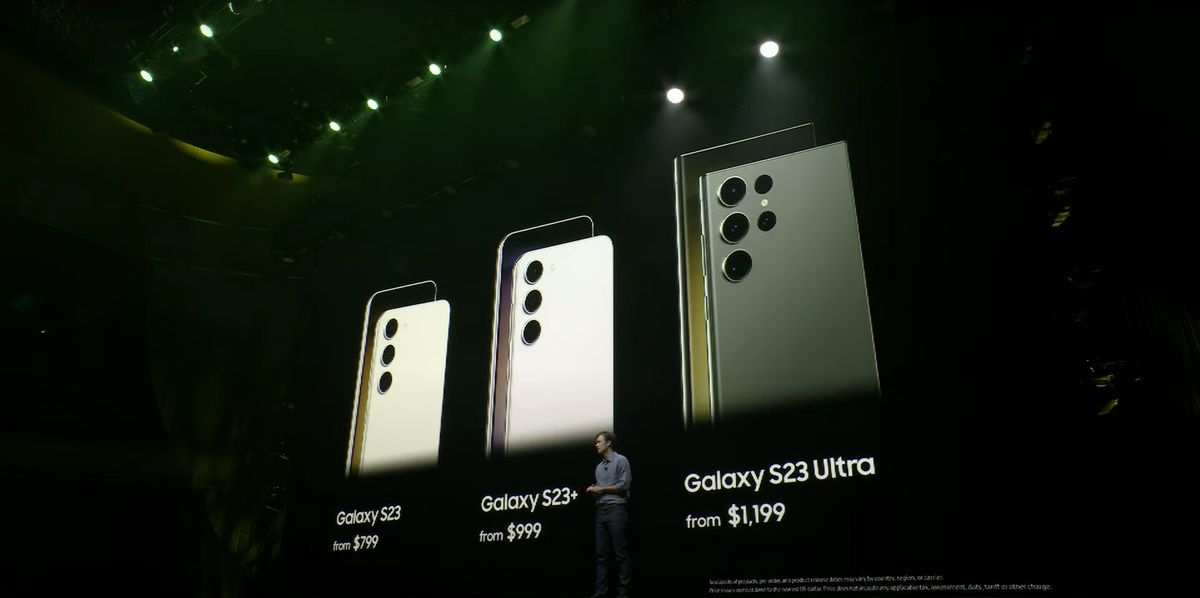Samsung's Galaxy S23 lineup is available in three choices. The company has expanded its flagship smartphone series over the years to cater to varying consumer tastes. If you want to buy Samsung's 2023 flagship phone, which is the right pick for you—the regular S23, the S23+, or the top-of-the-line S23 Ultra?
Find out all the differences between the S23, S23+, and S23 Ultra below to help you decide.
Design and Display
The Samsung Galaxy S23 Ultra continues with its angular design, as seen on the S22 Ultra. Unlike the regular S23 and S23+, the Ultra has a boxy design with angular corners and a curved display. This is a Note-like design that Samsung has used since its Note 10 days.
Due to the boxy design and bigger display, the S23 Ultra feels more unwieldy to use one-handed. Its 6.8-inch Dynamic AMOLED 2X panel remains unchanged from the S22 Ultra, with the same QHD+ resolution, 1,750 nits peak brightness, and 1-120Hz adaptive refresh rate.
The Galaxy S23 Ultra houses an S Pen slot in the bottom left corner, which offers an impressive 2.8ms latency and can recognize up to 4,096 pressure levels. Like the entire S23 lineup, the S Pen is also IP68 dust- and water-resistant. If you have made up your mind on getting the S23 Ultra, check out the best S Pen apps to get the most out of it.
In comparison, the Galaxy S23 and S23+ have a less boxy design with rounded edges, making them more convenient to use. Their smaller 6.1-inch and 6.6-inch FHD+ adaptive 48-120Hz AMOLED panels further help with one-handed use. Like the Ultra, the displays on the smaller models can reach a peak brightness of up to 1,750 nits and support HDR10+.
The entire Galaxy S23 lineup features a similar rear camera design in which Samsung has done away with a camera bump. Instead, the cameras sit flush with the phone's body. Only the camera rings protrude from the rear panel, as seen on the iPhone 13 Pro and iPhone 14 Pro series.
The Galaxy S23 Ultra has four cameras and a laser autofocus sensor at the back, while the S23 and S23+ feature three rear cameras. At the front, the phones have a hole punch to house the selfie camera. They also feature a 2nd generation ultrasonic fingerprint scanner under the display.
Samsung uses its more durable Armor Aluminum and Gorilla Glass Victus 2 panels across the entire S23 range.
As for colors, the entire S23 lineup is available in Phantom Black, Cream, Green, and Lavender shades. The Ultra is also available in exclusive Red, Lime, Graphite, and Sky Blue shade through Samsung's online store in the US.
Camera
Samsung has stuck with the same camera setup on the Galaxy S23 and S23+ as their predecessors. So, you get a 50MP f/1.8 primary camera with OIS, a 12MP f/2.2 ultra-wide, and a 3x f/2.4 telephoto shooter with OIS. While the camera setup is unchanged, the new models should offer better picture quality, thanks to processing improvements and a faster ISP.
As for the Galaxy S23 Ultra, it features a brand new 200MP f/1.7 primary camera with an improved OIS system. This is paired with the same sensors as before: 12MP f/2.2 ultra-wide, a 10MP f/2.4 shooter with 3x optical zoom, and a 10MP f/4.9 camera with 10x periscope zoom. A laser autofocus sensor assists this setup. The phone provides up to 10x optical zoom and 100x Space Zoom, while the other two models top out at 30x Space Zoom.
Samsung has switched to a new 12MP f/2.2 selfie camera with autofocus support across its entire S23 lineup. Despite the front camera's reduced resolution on the S23 Ultra vs. the S22 Ultra, the new camera should capture better and more detailed photos.
All three phones can record 8K videos at 30fps, while the selfie camera tops out at 4K@60fps. They are also capable of 960fps Super Slow-Mo videos. Other camera features on the S23 range include Nightography, Director's View, and Auto Framing.
Chipset, RAM, and Storage
Samsung has gone all-in on Qualcomm's Snapdragon chipset with the 2023 Galaxy lineup. The entire S23 series uses a special version of Qualcomm's Snapdragon 8 Gen 2 chip with faster CPU and GPU speeds—there's no model with an Exynos chip this time around. This Galaxy S23-exclusive chip carries the "For Galaxy" branding, with Samsung optimizing some games to deliver better performance.
Thanks to its bigger size and larger cooling system, the S23 Ultra should offer the best performance under sustained load. The regular S23 and the Plus model won't be far behind, though, since the 4nm Snapdragon 8 Gen 2 chip is highly power efficient.
The three S23 models differ in their RAM and storage configurations, though. Samsung is shipping the Galaxy S23 with 8GB RAM and 128GB or 256GB storage. The S23+ also has 8GB RAM but a higher 256GB base storage. There's a 512GB variant with the same amount of RAM.
As for the Galaxy S23 Ultra, its entry-level model has 8GB RAM and 256GB storage. The 512GB variant packs 12GB RAM, with Samsung launching a model with 1TB storage in some markets. This is a downgrade from before, as the S22 Ultra with 256GB storage shipped with 12GB RAM.
Samsung uses faster UFS 4.0 storage across the entire lineup, barring the entry-level 128GB Galaxy S23. It still uses the slower UFS 3.1 NAND. You can follow some tips to automatically improve the performance of your Samsung phone.
The entire Galaxy S23 range runs on Android 13-based One UI 5.1. Samsung will bring the latest version of its skin to other Galaxy devices in the coming weeks.
Battery and Charging
With its bigger display and footprint, it is not surprising the Galaxy S23 Ultra packs the biggest battery of the lot. It features a 5,000mAh battery with 45W wired and 15W wireless fast charging speeds. This is the same as the S22 Ultra from 2022, but given the more efficient chipset and other optimizations, the S23 Ultra should last longer.
The Galaxy S23 and S23+ ship with a 200mAh bigger battery than their predecessors: 3,900mAh and 4,700mAh, respectively. Coupled with the more efficient Snapdragon 8 Gen 2 chip, these phones should last much longer than the S22 series. Their charging speeds remain unchanged for both models: 45W for the Plus and 25W for the regular variant.
Samsung has equipped the entire S23 range with 15W wireless and 4.5W reverse wireless charging, so you can use the phone to top up your Bluetooth accessories.
Price
Given that the S23 Ultra packs the best specs, it is the most expensive of the lot. Prices for the phone start from $1,199 in the US for the entry-level variant and go up to $1,599 for the 12GB/1TB model.
The Galaxy S23+ starts from $999, with the 512GB configuration costing another $200. Lastly, there's the Galaxy S23, which is the cheapest of the trio. Its prices start from $799 for the 8GB/128GB model, while the bump to 256GB will cost you $849.
Which Galaxy S23 Model Is Right for You?
If you want the best Android smartphone of the year, look no further than the Galaxy S23 Ultra. It packs a massive display, a whopping 200MP primary camera, and a beefy battery to power it all. But if the Ultra is expensive or too big for you, consider the regular Galaxy S23. Its compact size means you won't have to do finger gymnastics while using the phone one-handed.
The S23+ is the perfect middle child, with a big display and an equally competent camera setup. If you don't care about the S Pen and want a phone with a relatively big display, the S23+ will be the right choice.

